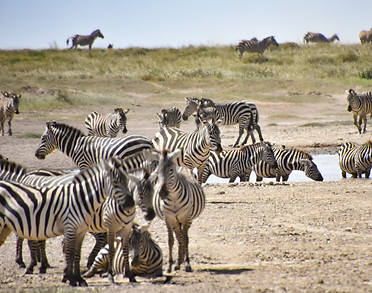
 |
|---|
SERENGETI NATIONAL PARK

Endless plains, stunning sunrises and sunsets, and wildlife that make the heart go wild and serene at the same time. This is Serengeti National Park. It is a national park and wildlife refuge on the Serengeti Plain in north-central Tanzania. It is best known for its huge herds of plains animals and it is the only place in Africa where vast land animal migrations still take place. Most visitors come here to witness the migration of millions of wildebeest, zebras, gazelles, and elands. These large herds of animals on the move can't be witnessed anywhere else. Whereas other famous wildlife parks are fenced, the Serengeti is protected but unfenced.
The park, an international tourist attraction, was added to the UNESCO World Heritage List in 1981. It stretches 14,763 square kilometers bordering Kenya in the north and Lake Victoria in the west. It has the highest concentration of large mammals on the planet with 2 million ungulates. In addition to more than 35 species of plains animals, there are 3000 lions, 1000 leopards, 250 cheetahs, 7500 hyenas and great numbers of rhinoceroses, hippopotamuses, giraffes, jackals, elephants, and baboons. Crocodiles inhabit the marshes near the Mara River. More than 350 species of birds, including ostriches, vultures, and flamingos, have also been recorded.
When to go to Serengeti National Park? All year round but if your interest is to follow the wildebeest migration then the best time is to visit the park from mid-January to mid-March for the calving season in southern Serengeti, and from July to October for the Mara River crossing in northeastern Serengeti.
When to go to
Serengeti National Park?
All year round but if your interest is to follow the wildebeest migration then the best time is to visit the park from mid-January to mid-March for the calving season in southern Serengeti, and from July to October for the Mara River crossing in northeastern Serengeti.








